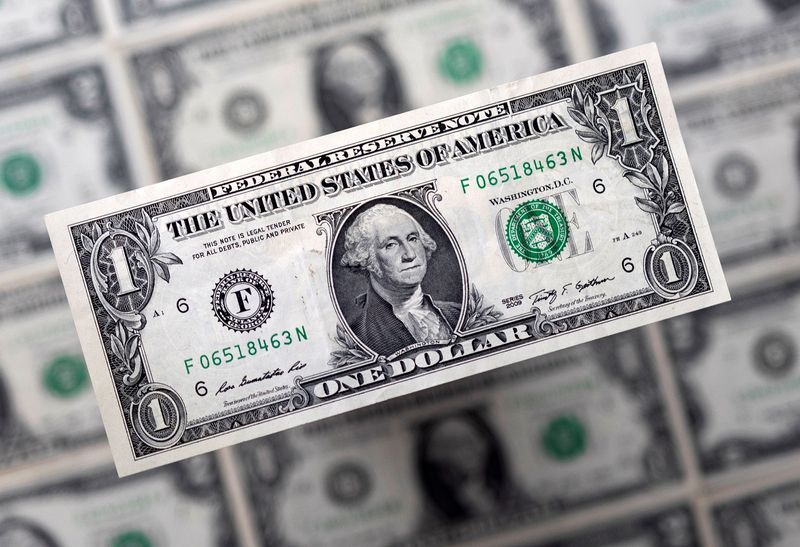By Kevin Buckland
TOKYO (Reuters) -The U.S. dollar stood at a one-year high against major peers on Thursday and headed for a fifth straight daily gain fuelled by higher yields and Donald Trump’s election victory.
The greenback climbed above 156 yen for the first time since July. The euro slumped to its weakest since Nov. 2023 at $1.0546 and sterling hit its lowest on the dollar in three months at $1.2683.
Higher trade tariffs and tighter immigration under the incoming Trump administration are projected to fuel inflation, potentially slowing the Federal Reserve’s rate cutting cycle longer term. Expectations for deeper deficit spending are lifting Treasury yields, providing the dollar with additional support.
The President-elect’s Republican Party will control both houses of Congress when he takes office in January, Edison Research projected on Wednesday, giving him sweeping power to push his agenda.
“The USD is a magical currency backed by carry, momentum, growth differentials, (and) impending fiscal and tariff kickers,” said Chris Weston, head of research at Pepperstone.
“While trends don’t last forever, until U.S. economics start to break down, it’s likely that an increasingly rich USD position proves to be the primary factor that could cause a tradeable selloff.”
Cryptocurrency bitcoin also shot to a fresh record high of $93,480 overnight, and was rising back towards that level in Asia’s day. Trump has vowed to make the United States “the crypto capital of the planet”.
The U.S. dollar index, which measures the currency against six top counterparts including the euro and yen, added 0.2% to 106.69, its highest since early November 2023.
The dollar had dipped briefly on Wednesday after a measure of U.S. consumer inflation met economists’ forecasts, keeping the Fed on track to reduce rates at their meeting in December.
Long-term Treasury yields also rose on Wednesday, and extended that advance in the Asian morning, pushing as high as 4.483% for the first time since July 1. [US/]
Elsewhere, the Australian dollar fell to a three-month low after marginally weaker jobs data, touching $0.6464.
“After an extended period of Australian jobs growth exceeding expectations, today’s softer jobs growth offers some modest indications of cooling within an exceptionally resilient labour market,” said Tony Sycamore, an analyst at IG.
“It provides the central bank with the breathing room to maintain its focus on inflation and keep rates in restrictive territory into year-end, all without any significant signs of deterioration in the labour market.”
The New Zealand dollar fell about 0.4% to $0.5859. [NZD/]

